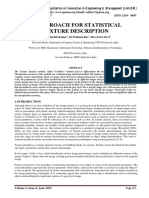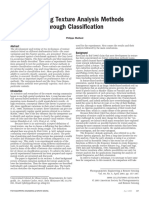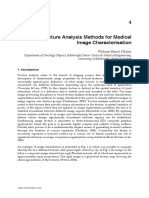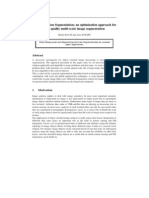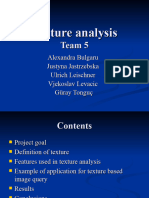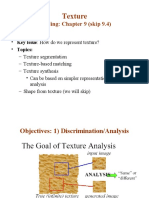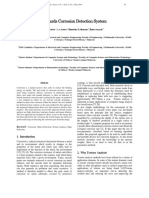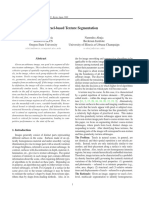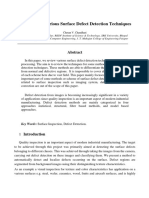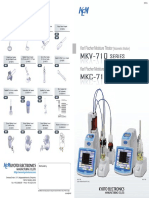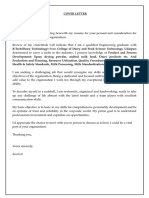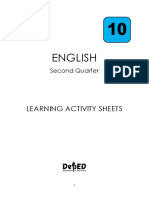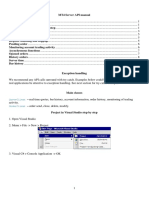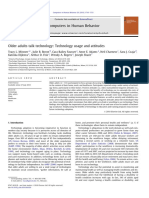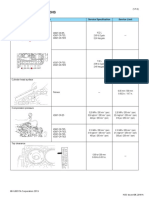0% found this document useful (0 votes)
92 views2 pagesTexture Analysis
This document discusses texture analysis in machine vision and image processing. It defines texture as the spatial variation in pixel intensities within an image region, which can help classify materials like cotton or leather. There are three main problems in texture analysis: texture classification, which identifies uniform textured regions; texture segmentation, which finds boundaries between differently textured regions; and shape from texture, which extracts 3D shape from variations in texture across an image. Related publications on texture analysis and segmentation are also cited.
Uploaded by
Rasika BandaraCopyright
© Attribution Non-Commercial (BY-NC)
We take content rights seriously. If you suspect this is your content, claim it here.
Available Formats
Download as DOCX, PDF, TXT or read online on Scribd
0% found this document useful (0 votes)
92 views2 pagesTexture Analysis
This document discusses texture analysis in machine vision and image processing. It defines texture as the spatial variation in pixel intensities within an image region, which can help classify materials like cotton or leather. There are three main problems in texture analysis: texture classification, which identifies uniform textured regions; texture segmentation, which finds boundaries between differently textured regions; and shape from texture, which extracts 3D shape from variations in texture across an image. Related publications on texture analysis and segmentation are also cited.
Uploaded by
Rasika BandaraCopyright
© Attribution Non-Commercial (BY-NC)
We take content rights seriously. If you suspect this is your content, claim it here.
Available Formats
Download as DOCX, PDF, TXT or read online on Scribd
/ 2



